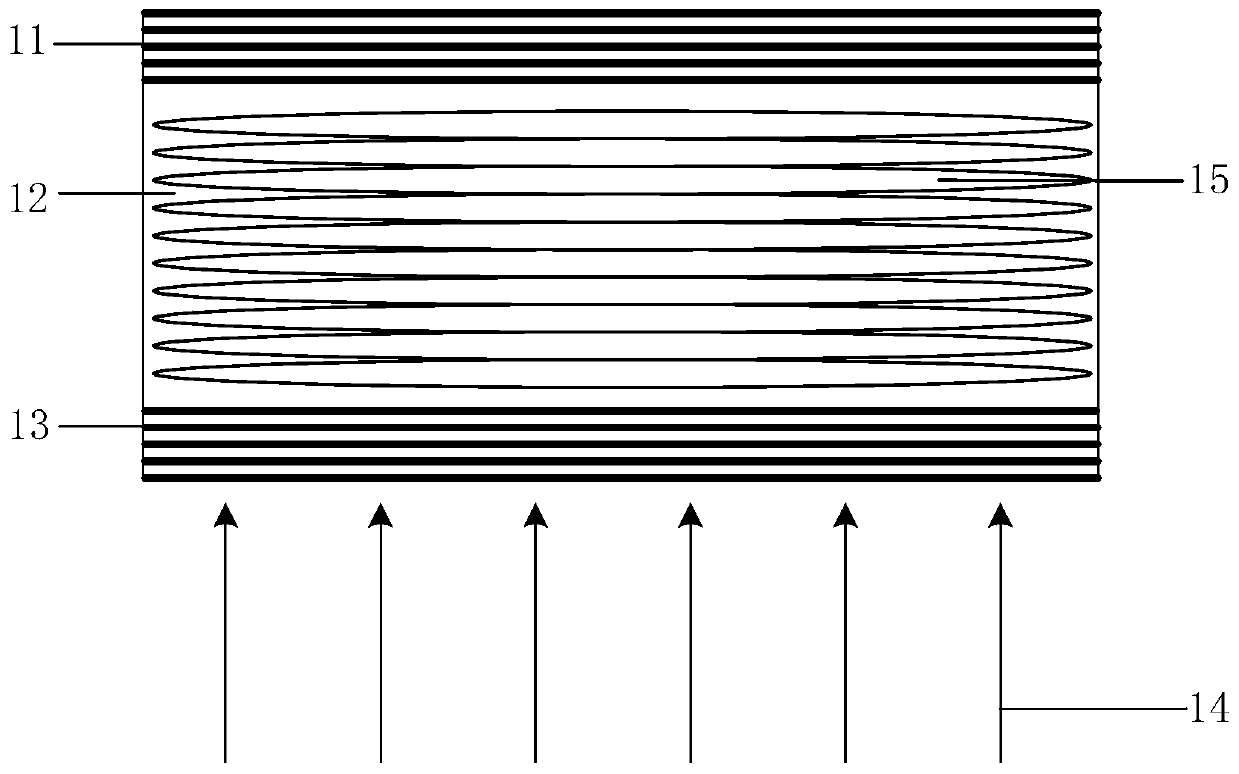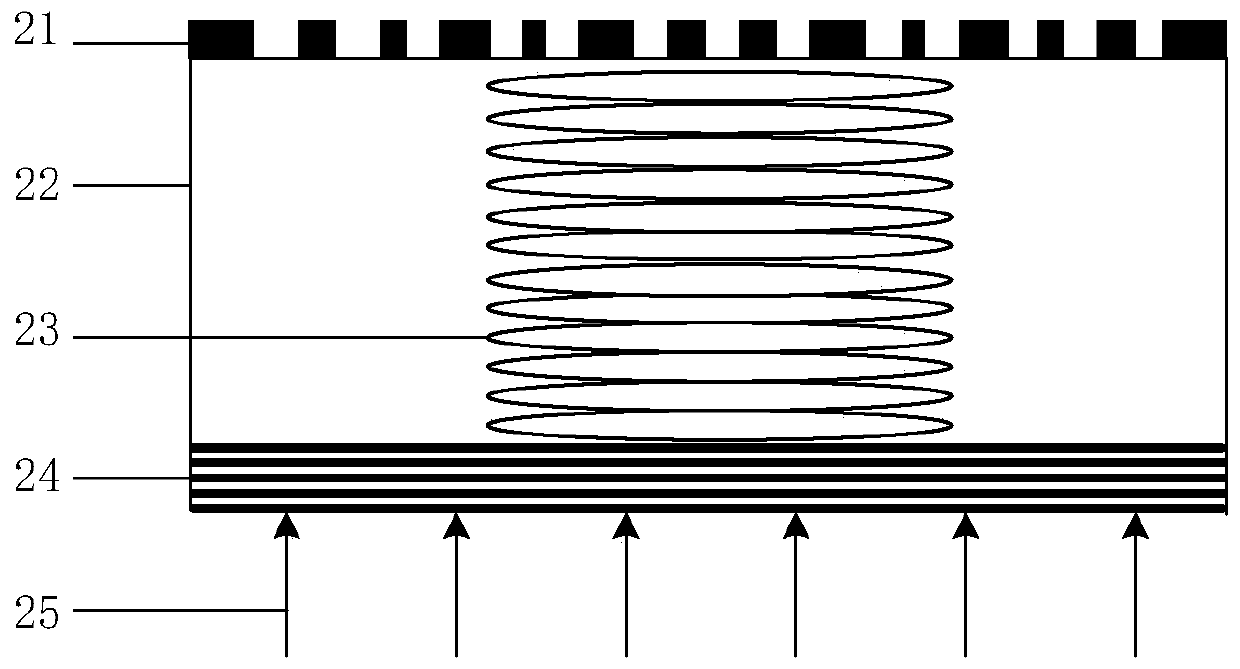Resonator Based on Aperiodic Subwavelength Grating and Distributed Bragg Reflector
A technology of Bragg reflector and sub-wavelength grating, which is applied in the field of resonant cavity, can solve the problems of limiting the application range of resonant cavity and the inability to control the width of standing wave field, etc., and achieve the effect of excellent structure, high integration and stable performance
Active Publication Date: 2019-10-01
BEIJING UNIV OF POSTS & TELECOMM
View PDF7 Cites 0 Cited by
- Summary
- Abstract
- Description
- Claims
- Application Information
AI Technical Summary
Problems solved by technology
Since the width of the stable standing wave field that can be formed in each resonator is fixed and is not much different from the width of the resonator, the width of the standing wave field cannot be controlled to change, which limits the application range of the resonator in optical communication systems
Method used
the structure of the environmentally friendly knitted fabric provided by the present invention; figure 2 Flow chart of the yarn wrapping machine for environmentally friendly knitted fabrics and storage devices; image 3 Is the parameter map of the yarn covering machine
View moreImage
Smart Image Click on the blue labels to locate them in the text.
Smart ImageViewing Examples
Examples
Experimental program
Comparison scheme
Effect test
Embodiment Construction
the structure of the environmentally friendly knitted fabric provided by the present invention; figure 2 Flow chart of the yarn wrapping machine for environmentally friendly knitted fabrics and storage devices; image 3 Is the parameter map of the yarn covering machine
Login to View More PUM
 Login to View More
Login to View More Abstract
The present invention relates to the field of semiconductor photoelectronic device, and provides a resonant cavity based on a non-periodic sub-wavelength grating and a distributed bragg reflector (DBR). The resonant cavity based on a non-periodic sub-wavelength grating and a DBR has a feature of controlling distribution of a light standing wave field in the resonant cavity. The structure of the resonant cavity comprises from top to bottom: a DBR, a resonant cavity and a non-periodic sub-wavelength grating reflector. A planar incident light reaches the non-periodic sub-wavelength grating reflector through the resonant cavity to realize oblique reflection deflect towards the center of the resonant cavity, and the oblique reflection is subjected to multiple oscillation and coupling in the resonant cavity to form a stable standing wave field with light field energy concentrated on the middle portion of the resonant cavity, wherein the width of the standing wave field is determined by a structure of the non-periodic sub-wavelength grating, and therefore the structure of the non-periodic sub-wavelength grating is changed to achieve control of the width of the standing wave field in the resonant cavity. The problem is solved that a traditional resonant cavity cannot control the width of the standing wave field, and the resonant cavity based on the non-periodic sub-wavelength grating and the distributed bragg reflector can be widely applicable to the optical communication and optical system fields.
Description
technical field The invention relates to the field of semiconductor optoelectronic devices, more specifically, to a resonant cavity based on aperiodic sub-wavelength gratings and distributed Bragg reflectors. Background technique With the rapid development of optical communication systems, semiconductor optoelectronic devices have been widely used. In order to study optical communication systems with higher speed and larger capacity, researchers are required to design semiconductor optoelectronic devices with higher integration, better structure and more stable performance. Resonant cavity is an important cavity structure in semiconductor optoelectronic devices, which is widely used in lasers and photodetectors. Among them, the Fabry-Perot cavity (F-P cavity) is a typical cavity. The F-P cavity is also called a plane-parallel cavity. It is composed of two parallel plane mirrors (the radius of curvature of the two mirrors is infinite). A light parallel to the axis of the r...
Claims
the structure of the environmentally friendly knitted fabric provided by the present invention; figure 2 Flow chart of the yarn wrapping machine for environmentally friendly knitted fabrics and storage devices; image 3 Is the parameter map of the yarn covering machine
Login to View More Application Information
Patent Timeline
 Login to View More
Login to View More Patent Type & Authority Patents(China)
IPC IPC(8): G02B27/00H01S3/081
Inventor 段晓峰张帅李宫清黄永清任晓敏刘凯蔡世伟
Owner BEIJING UNIV OF POSTS & TELECOMM
Features
- R&D
- Intellectual Property
- Life Sciences
- Materials
- Tech Scout
Why Patsnap Eureka
- Unparalleled Data Quality
- Higher Quality Content
- 60% Fewer Hallucinations
Social media
Patsnap Eureka Blog
Learn More Browse by: Latest US Patents, China's latest patents, Technical Efficacy Thesaurus, Application Domain, Technology Topic, Popular Technical Reports.
© 2025 PatSnap. All rights reserved.Legal|Privacy policy|Modern Slavery Act Transparency Statement|Sitemap|About US| Contact US: help@patsnap.com



